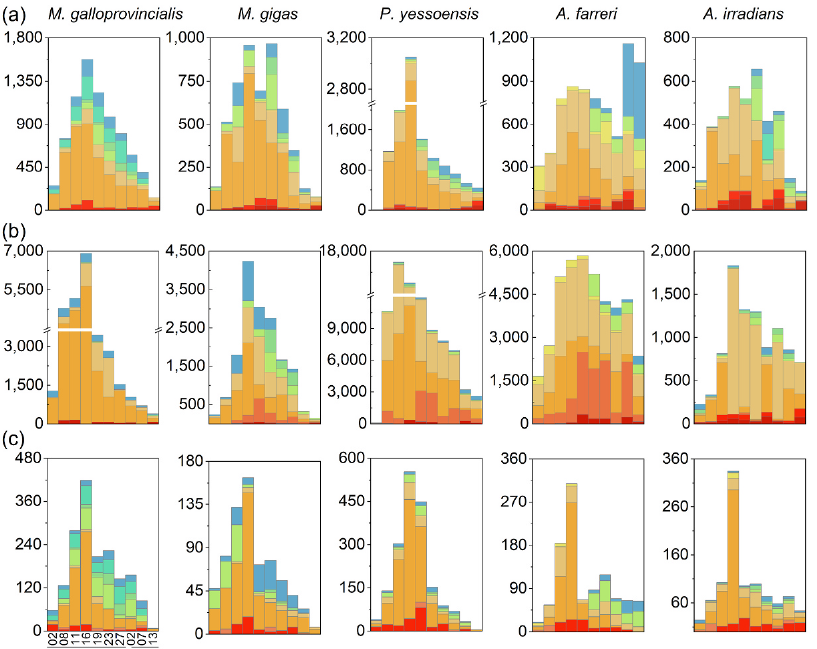麻痹性贝类毒素(paralytic shellfish toxin)为全球乃至我国近海污染最为严重的海洋生物毒素,所引发的食品安全风险受到国际社会共同关注,是联合国GlobalHAB国际研究计划及“海洋十年”新行动计划重点研究对象。
自2016年秦皇岛贻贝中毒事件暴发以来,中国水产科学研究院黄海水产研究所水产品质量安全形成机制与防控技术创新团队综合运用多学科方法及多组学技术,系统研究了秦皇岛海域麻痹性贝类毒素风险发生的环境驱动、形成过程、调控机制,并对我国传统模式下消费风险进行了评估,初步摸清了该海域麻痹性贝类毒素风险发生的全链条及关键风险控制点,为科学构建区域性麻痹性贝类毒素风险主动防控技术提供了研究基础。相关成果发表在Environmental Pollution, Environmental Research, Toxins和Journal of Oceanology and Limnology等期刊上。

黄海水产研究所吴海燕副研究员为论文《Formation mechanism and environmental drivers of Alexandrium catenella bloom events in the coastal waters of Qinhuangdao, China》和《Variations in the toxicity and condition index of five bivalve species throughout a red tide event caused by Alexandrium catenella: A field study》第一作者,博士研究生董晨帆为论文《Transcriptome analysis reveals MAPK/AMPK as a key regulator of the inflammatory response in PST detoxification in Mytilus galloprovincialis and Argopecten irradians》和《Thermal processing induced release and degradation of paralytic shellfish toxin from mussels Mytilus edulis》第一作者,谭志军研究员为通讯作者。研究工作得到了国家重点研发计划课题(2017YFC1600701)、国家自然科学基金(31772075,32072329,41806138)、现代农业产业技术体系(CARS-49)及中国水产科学研究院基本科研业务费(2020TD71)等项目资助。
全文链接:
1、https://doi.org/10.1016/j.envpol.2022.120241
2、https://doi.org/10.1016/j.envres.2022.114327
3、https://doi.org/10.3390/toxins14080516
4、https://doi.org/10.1007/s00343-021-1172-0

